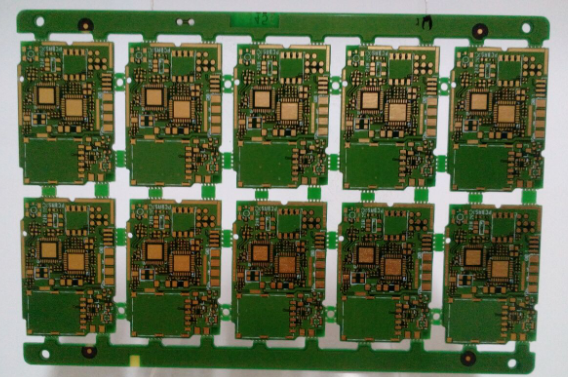Several simple PCB surface treatment methods
PCB surface treatment technology refers to the process of artificially forming surface layers with different mechanical, physical and chemical properties on PCB components and electrical connections. The purpose is to ensure that the PCB board has good solderability or electrical properties. Because copper often exists in the air in the form of oxides, which seriously affects the solderability and electrical properties of the PCB, the surface treatment of the PCB is necessary.
The commonly used surface treatment methods are:
1. Hot air leveling
The process of coating the surface of PCB with molten tin-lead solder and heating compressed air for leveling (blowing) can form a coating that resists copper oxidation and has good solderability. In hot air leveling, the solder and copper form a copper-tin-gold compound with a thickness of about 1-2 mils at the joint.

2. Organic antioxidant
An organic skin film is grown on the clean bare copper surface by chemical method. The film has the properties of oxidation resistance, thermal shock resistance, and moisture resistance, and can protect the copper surface from rust (oxidation or vulcanization) under normal conditions. At the same time, the flux must be easily removed at the subsequent high temperature.
Chemical precipitation of nickel and gold
The copper surface is plated with thick nickel-gold alloy, which has good electrical properties and can protect PCB printed boards for a long time. Unlike OSP, which is only used as an anti-rust layer, when PCB is used for a long time, it can obtain good electrical performance. In addition, it also has environmental resistance that other surface treatment processes do not have.
4. Electroless silver plating
The process of OSP and electroless nickel/gold plating is simple and fast. Exposed to hot, humid and polluted environment, it can still provide good electrical performance and maintain good solderability, but it will lose its luster. Because there is no nickel under the silver layer, the silver deposition does not have all the good physical strength of electroless nickel/gold impregnation.
5. Nickel and gold plating
Before gold plating, the conductors on the PCB surface should be nickel-plated. Nickel plating mainly prevents the diffusion of gold and copper. There are two types of nickel-gold deposits: soft gold (pure gold, dark gold) and hard gold (smooth, hard surface, wear-resistant, cobalt and other elements, bright surface). Soft gold is mainly used to make gold wires for chip packaging; hard gold is mainly used for electrical interconnection of non-welded parts (such as gold fingers).
6. PCB hybrid surface treatment technology
Choose more than two surface treatments. Common forms are: nickel-gold plating + anti-oxidation, nickel-gold plating + nickel-gold plating, nickel-gold plating + hot air leveling, nickel gold plating + hot air leveling.
Hot air leveling (lead-free/lead) is the most common and cheapest surface treatment method, but please pay attention to the EU RoHS regulations.
RoHS: RoHS is a mandatory standard stipulated by the European Union. Its full name is "Restrict the use of certain hazardous substances in electrical and electronic equipment." The standard came into effect on July 1, 2006. Mainly used to standardize the material and process standards of electronic products, making them more conducive to human health and environmental protection. The standard aims to eliminate six substances in electronics and electronic products, including lead, mercury, cadmium, hexavalent chromium, polybrominated biphenyls and polybrominated diphenyl ethers. The lead content must not exceed 0.1%. ipcb is a high-precision, high-quality PCB manufacturer, such as: isola 370hr PCB, high-frequency PCB, high-speed PCB, ic substrate, ic test board, impedance PCB, HDI PCB, Rigid-Flex PCB, buried blind PCB, advanced PCB, microwave PCB, telfon PCB and other ipcb are good at PCB manufacturing.